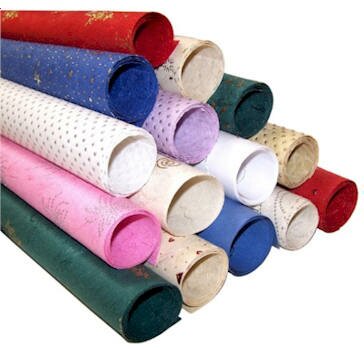Paper
May 7, 2007 – 9:10 pm
PAPER

PAPER
Paper! Even the coming of the Computer Age has not been able to dislodge Paper from its undisputed position as the King of the world of communication. Let us look into its past, weigh the pros and cons of the present and then sneak into the future.
From where did Paper take off first? Some opine that the Egyptians were the first to use a form of writing material which the Greeks termed papyrus. Strips of papyrus plants were beaten for this purpose and came into regular use from about 3000 BC when it began to be sold to Greece and Rome. Outside Egypt parchment for writing came to be made from the skins of sheep and calves. These too became popular because papyrus plants could only be grown in subtropical climate.
The names of China and Paper go hand in hand. Thousands and thousands of years ago during the Shang and Zhou dynasties documents were written on bone or bamboo. It was very cumbersome and heavy. Sometimes expensive silk was used. Cai Lun, and fficial of the Han rulers, is said to be the first one to invent the modern way of paper-making. He was inspired by the wasps and the bees.
Paper was not used for writing alone. Archaeologists digging in China have found that it was used to wrap delicate bronze mirrors and also as a padding for toxic medicine. Paper came to be folded and sewn to retain the flavor of tea – (7th to 10the century AD). It was also used as paper cups for serving tea. From the 3rd century BC paper became a popular medium for writing.
What is paper? It is a thin material which is the product of mixing various types of fibers – mainly vegetable ones having cellulose. These are bonded together by hydrogen. Today many synthetic fibers are being used together with wood pulp. The pulpwood is got from many kinds of trees like spruce, aspen, cotton, hemp linen and even rice.
China claims to have printed the world’s first book, The Diamond Sutra of 868 AD. Arab travelers looked down on the Chinese for using toilet power and not water to clean themselves. In 1393 AD that Imperial Supplies of the Chinese Emperor manufactured 720,000 sheets of perfumed, light yellow tinted toilet paper for the entire court made from rice-straw.
Paper is used for printing money. It began during the Song dynasty (10th to 13th century AD) when the government produced the first printed notes.
The Mayans too used paper named amatl, in the 5th century AD, as per the findings of archaeologists. The tradition, on a small scale, has not completely died out even today. In India books were written on palm leaves and Buddhist priests had a hand in spreading the art.
The secret of paper making slowly began to creep out of China despite her reluctance to part with it. The paper was thin and could only be written on one side. In Cairo thick paper started to be made while Iran went in for the thin variety. The Crusades churned up the scene and soon paper making made its appearance in Spain at Valencia. From Spain it traveled to Italy and then on to Germany where a revolution took place with the arrival of the steam driven machines in 19th century. Together with paper less expensive pens and pencils also began to flood the markets. At the stroke of a pen the masses were uplifted to a higher human level. Paper is the key to spread of global education and culture. While Paper had been costly, education remained confined to the lucky few but with the industrial revolution there was a sea change. Peasants and workers began to read, think and shape their own destinies.
Paper has many uses – paper money, tickets, documents, vouchers, cartons, wallpaper, toilet paper and tissues, peppier mache, origami, emery and sand paper etc. The biggest problem facing the Paper industry today is the question of environment. This has opened up the question of recycling. Modern paper foam is environment friendly as it uses corn protein. There are two types of paper being used by publishers. The more durable variety makes hard-back books while the less durable ones for paperbacks. In 2006 the world’s first Paper Technology Centre was opened in Hedenheim, Germany with great hopes for the future of Paper.